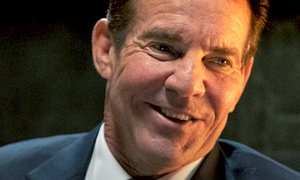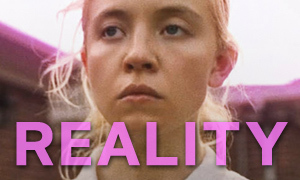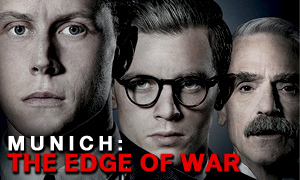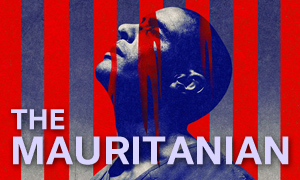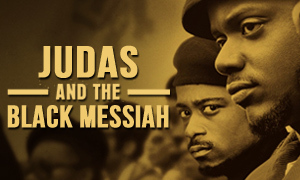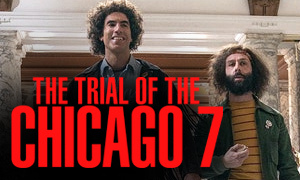The Best of Enemies: History vs. Hollywood
| REEL FACE: | REAL FACE: |
Taraji P. Henson
Born: September 11, 1970 Birthplace: Washington, District of Columbia, USA | Ann Atwater
Born: July 1, 1935 Birthplace: Hallsboro, North Carolina, USA Death: June 20, 2016, Durham, North Carolina, USA |
Sam Rockwell
Born: November 5, 1968 Birthplace: Daly City, California, USA | C.P. Ellis
Born: January 8, 1927 Birthplace: Durham, North Carolina, USA Death: November 3, 2005, Durham, North Carolina, USA (Alzheimer's disease) |
Anne Heche
Born: May 25, 1969 Birthplace: Aurora, Ohio, USA | Mary Ellis
Born: November 17, 1929 Death: October 22, 1999 |
Babou Ceesay
Born: 1979 Birthplace: London, England, UK | Bill Riddick
Pictured in 2011 |
Did Ann Atwater's husband leave her to raise their children alone?
Yes. The Best of Enemies true story reveals that Ann Atwater got married at the age of 14 and moved to Durham, NC in 1953. Ann's dad had encouraged her baby's father to marry her. However, her husband soon left her, and she was faced with raising their two children on her own.
How did Ann Atwater become a civil rights activist?
Atwater had been an activist for quite some time before her role in helping to solve the problems related to the desegregation of schools, which is what's focused on in the movie. She first became involved in activism after local housing advocates helped her be able to keep her home when she fell behind on rent. The experience inspired her to become involved in housing advocacy herself.
She joined Operation Breakthrough in the mid-1960s at the urging of activist Dr. Howard Fuller, who taught her the ins and outs of community organizing. The organization was committed to battling economic and racial inequality and poverty. Atwater's work focused on resolving the differences in how community aid organizations treated whites and blacks.
Atwater served on various committees and commissions that dealt with inequality, mainly those that were centered around housing and poverty. Her notoriety as a civil rights activist led to her being elected as the vice president of her local Democratic Party. She also became the first female deacon in her church. -PopSugar
Did C.P. Ellis really operate a gas station?
Yes. In researching The Best of Enemies' historical accuracy, we learned that C.P. Ellis was the son of a millworker and was raised in poverty. As an adult, he worked as a service station attendant before saving up enough money to buy a small service station in a factory town. He struggled to make ends meet and provide for his family.
Did Ann Atwater really lunge at KKK leader C.P. Ellis after he spewed racism at a city council meeting?
Yes. Like in The Best of Enemies movie, the true story confirms that Ann Atwater first met C.P. Ellis at a city council meeting where Ellis went on a racist diatribe. Atwater lunged at him but her friends restrained her.
Did Ann Atwater intend to stab C.P. Ellis with a knife?
"This particular night C.P. was up raging and ranting, that's when I wanted to cut his head off. ... I pulled out, I had a little small knife, pocket knife." A friend talked her out of trying to stab C.P., telling her, "That's what they want you to do." -An Unlikely Friendship Documentary
When did Ann Atwater become involved in the desegregation of schools?
A fact-check of The Best of Enemies confirms that Atwater became involved in school desegregation in 1971 when she was asked to co-chair a special initiative to address the matter, which is when we catch up with her in the movie. The other co-chair was C.P. Ellis (portrayed by Sam Rockwell).
How did C.P. Ellis become a racist?
Like Ann Atwater, Claiborne Paul Ellis was raised in a life of poverty. He grew up in the tobacco and textile town of Durham, North Carolina. Racism was instilled in Ellis from a young age. His father and local community blamed poor blacks for their problems, and reasoned that blacks were to blame for why they could never get ahead regardless of how hard they worked.
"The first time I ever used that N-word was in a little old football field down on the eastern section of Durham, right beside the railroad track," recalled C.P. Ellis. "On Sunday afternoon, the little black kids would come across the railroad track and meet down there in the field. We'd come from the other side, and we'd meet there with 'em. One Sunday, they won the football game, and I remember very clearly, saying, "You n**gers get back across the railroad track." When later asked when it was that he joined the Klan, he would respond by saying it was when he was in that football field and called that little boy what he did. -An Unlikely Friendship Documentary
These bigoted beliefs are what led Ellis to become a member of the local Ku Klux Klan. In the documentary, he states that the organization's teachings positioned "blacks, Jews, and Catholics" as the enemy. The movie fictionalizes this to blacks, Jews, and Communists, not Catholics. The real Ellis started a youth group designed to indoctrinate young people. C.P. Ellis eventually took on leadership roles in the KKK and was voted into the position of "Grand Cyclops" of the Durham, NC, chapter. He was paired with Ann Atwater in 1971 when they were both picked to co-chair the committee on school desegregation.
Did C.P. Ellis' wife like him being involved in the Klan?
No. "She didn't particularly like the Klan," C.P. Ellis said of his wife, "but she endured it because I enjoyed it, see? She said, 'Now, you ain't going to take over that thing.'" However, The Best of Enemies fact vs. fiction confirms that he went on to become president (aka "Grand Cyclops") of his local chapter. -An Unlikely Friendship Documentary
Did C.P. Ellis have a son with an intellectual disability?
Yes. C.P. Ellis and his wife Mary had a son who they called Punkin'. He was blind, deaf, and suffered from an intellectual disability. They raised him until approximately age 11, when he was placed in an institution. -The Best of Enemies book
How did Ann Atwater and C.P. Ellis end up chairing the committee on school desegregation together?
Even though the Supreme Court had ruled in the landmark 1954 Brown v. Board of Education case that schools had to be desegregated, this by no means meant that there wasn't a great deal of resistance in some communities, especially in the South. In real life, the labor union (AFL-CIO) in Durham was given a grant to help mediate the problem, after which a 10-day public meeting, or charrette, was held. Local leaders, in addition to the organizer of the charrette, Bill Riddick (portrayed by Babou Ceesay in the movie), decided that Ann Atwater and C.P. Ellis were the best choices to present a variety of viewpoints from opposing sides, so they had them chair the meeting together.
"We were chosen to be co-chairs to integrate the school system peacefully," said Atwater (School for Conversion). The pair weren't the first choices. However, more prominent members of the community felt that the issue was too hot to get involved in.
Did C.P. Ellis really refuse to sit down when meeting Ann Atwater and Bill Riddick for dinner?
Yes, this comes straight from Diane Bloom's 2002 documentary An Unlikely Friendship. "C.P. was pacin' the floor 'cause Bill and I were the only two blacks there," said Ann. "C.P. kept walkin' and kept walkin'. He didn't want nobody to see him sit down with no blacks to eat." Eventually, he did kind of pull up a chair.
Were they both initially resistant to the idea of integrating the schools?
Yes. "He didn't want [integration]," said Atwater of C.P. Ellis, "and I particularly didn't want it at the time, but then I knew we were going to have to be at one school and the children had to get the best education they could. I know if we weren't gonna look after our children, nobody else would. ... He was upset and I was upset, and he was cussin' and callin' all black folks n**gers and I was callin' all white folks crackers, and I couldn't stand white folks anyway." -School for Conversion
Did four Klansman shoot up the house of a white woman who they said had a black boyfriend?
No. In the movie, it's hard to tell if they're trying to kill the woman or frighten her, but there's no mention of the shooting in either the documentary or The Best of Enemies book.
Did C.P. Ellis really clap his hands to gospel singing at the end of the first week of meetings?
Yes. According to The Best of Enemies true story, Ann says that C.P. Ellis indeed started tapping his feet and then clapping his hands along with the others. However, she says that they had to teach him how to clap his hands in rhythm and not on an odd beat. -An Unlikely Friendship Documentary
Did Ann Atwater really spin a city councilman back around in his chair after he turned his back to the blacks?
Yes. "The city council people didn't want to look at us because we were black," said Ann. "They would turn their chairs around, and they were chairs that wheeled around. They would turn their back to us, and I would walk up and knock 'em back around, you know, let them know that we were talking to them." -An Unlikely Friendship Documentary
Did Ann Atwater and C.P. Ellis really become friends?
Over the course of the 10 days that they co-chaired the committee on school desegregation, Ann Atwater and C.P. Ellis discovered that their life experiences weren't all that different. Initially, they didn't even speak to one another. Atwater said that she refused to go to the first meeting, but her boss in the housing authority told her she'd lose her job if she didn't show up.
"Ann and I got deeply involved in that school program," said C.P. Ellis, "simply because the young people were involved and they were hungry, and they were dissatisfied and they didn't like what was goin' on. Ann wanted to make some changes and I did too, but I think our purpose was different. Our thoughts and what we wanted to accomplish [at first] was different." -An Unlikely Friendship Documentary
"It wasn't until way down in the meeting, about the last week of it, is when the children talked to us and got us together sayin' that they wanted to go to school with each other," said Atwater, "and then we looked at each other like fools. We'd been arguing about the wrong thing and hadn't been doing anything to make the school system be better. That's when me and him started gettin' together. ... He decided that I wasn't as bad. He said, 'You ain't as bad as I thought you was,' and he started talkin' to me, and we started talkin' back [and forth]. We went in the office and cried because we [had been] doing things the wrong way just because one was black and one was white." Moving forward, they put the emphasis on the schools instead of each other.
Both grew up in poverty and both shared a concern for the education of young people in their communities, including their own kids. They discussed the problems that their children had in school. In the end, Ellis began to realize that desegregation and civil rights were universally beneficial across racial lines. He no longer viewed poor black communities as holding poor white communities down. He was beginning to see these communities as being on the same side. The system that held their communities down was their common enemy, not each other.
Did C.P. Ellis really tear up his KKK membership card?
Yes. Following his nearly two-week long meeting with Ann Atwater, C.P. Ellis quit the KKK. Like in The Best of Enemies movie, examining the fact vs. fiction reveals that he did tear up his KKK membership card in public. His action resulted in death threats and he was shunned by a significant portion of his community. "I never did go back to the Klan after I left that school program," Ellis said. As a result, there was no one to direct the Klan's Youth Corp and the program disbanded. -An Unlikely Friendship Documentary
Did they really manage to present a list of balanced recommendations regarding school desegregation?
Yes. They presented ways to improve curriculum, in addition to making it easier for students' voices to be heard. "We went to the schoolhouse and we found out that the teachers there were out of their field," recalled Atwater. The kids in some of the schools were also being taught material that was a year behind what kids their same age were being taught in other schools. "So that's when me and him decided that we would work for the cause and stop fussin' and arguin' because one was black and one was white." -School for Conversion Interview
Did Ann Atwater receive flak for working with C.P. Ellis?
Yes. In examining The Best of Enemies' historical accuracy, we learned that Ann Atwater was ridiculed by some in her community over the fact that she had worked with C.P. Ellis. "They said I sold out because I worked with a Klansman," recalled Atwater. "He changed from a Klansman to a Christian, and they said I had sold out, that he was a n**ger lover." -School for Conversion Interview
Did Ann Atwater and C.P. Ellis remain friends?
Yes. Ann Atwater and C.P. Ellis formed a lifelong friendship. "We've made it through these years, together 30 years, and we're still friends," Ann said in the documentary. Ann actually gave Ellis' eulogy when he passed away. Ann's granddaughter says that she's always viewed C.P. Ellis like an uncle and still keeps in touch with his family.
What became of Ann Atwater and C.P. Ellis?
Ann Atwater continued her work fighting for racial equality as a grass roots organizer, passing away in 2016. C.P. Ellis, who died of Alzheimer's in 2005, became a champion of union and labor organizations, working as an AFL-CIO organizer. He credited his meetings with Ann Atwater as being the reason he was able to shed his racism. "I haven't been the same since I left that school program," he said years later. "All of this drastically changed my life, I mean, my thinking. How in the hell does people get so screwed up mentally? They don't have any evidence to some of the things that they do and some of the opinions they make. They just have them." -An Unlikely Friendship Documentary
Did God play an important part in the life of the real Ann Atwater?
Yes. The Best of Enemies fact-check revealed that Ann credited God with giving her the strength to help so many people. "I just lend whatever God gives me to give out. ... I feel that when somebody calls me for some help, God wants me to go on record sayin' I tried. All I had was God holding my back and that's it. ... He still got my back and He always will have it as long as I keep trusting in him." -School for Conversion
Ann Atwater Documentary & Related Videos
Dig deeper into The Best of Enemies true story by watching the Ann Atwater interview and documentary below.
